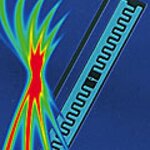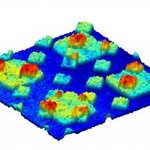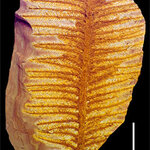Applied Physics

Using artificial atoms on a chip, Yale physicists have taken the next step toward quantum computing by demonstrating that the particle nature of microwave photons can now be detected, according to a report spotlighted in the February 1 issue of the journal Nature.
Quantum theories are often considered to apply best to processes that happen on the smallest scale of atoms and molecules. By making artificial atoms larger — to a size that is nearly visible — and using microwaves as the source of energy, the collaborative research from the laboratory of Professor Robert Schoelkopf and the theory…

Physicists have for the first time stopped and extinguished a light pulse in one part of space and then revived it in a completely separate location. They accomplished this feat by completely converting the light pulse into matter that travels between the two locations and is subsequently changed back to light.
Matter, unlike light, can easily be manipulated, and the experiments provide a powerful means to control optical information. The findings, published this week by Harvard University researchers in the journal Nature, could present an entirely new way for scientists and engineers to…

A new analysis led by an MIT scientist describes a mechanism for capturing carbon dioxide emissions from a power plant and injecting the gas into the ground, where it would be trapped naturally as tiny bubbles and safely stored in briny porous rock.
This means that it may be possible for a power plant to be built in an appropriate location and have all its carbon dioxide emissions captured and injected underground throughout the life of the power plant, and then safely stored over centuries and even millennia. The carbon dioxide eventually will dissolve in the brine and a fraction will adhere…

Pity the molecular biologist.
The object of fascination for most is the DNA molecule. But in solution, DNA, the genetic material that hold the detailed instructions for virtually all life, is a twisted knot, looking more like a battered ball of yarn than the famous double helix. To study it, scientists generally are forced to work with collections of molecules floating in solution, and there is no easy way to precisely single out individual molecules for study.
Now, however, scientists have developed a quick, inexpensive and efficient method to extract single DNA molecules and position them…

A new process for creating patterns of individual molecules on a surface combines control of self-assembled monolayers (SAMs) and a soft lithography technique known as microcontact printing. Scientists use the process, known as "microcontact insertion printing" to build surfaces that have molecules with specific functions inserted at known intervals on a surface. The new technique, with potential applications ranging from analysis of biochemical mixtures to molecular-scale electronic components, will be described as the cover story of the 5 February 2007 issue of the journal Applied Physics…

Researchers have constructed a protein out of amino acids not found in natural proteins, discovering that they can form a complex, stable structure that closely resembles a natural protein. Their findings could help scientists design drugs that look and act like real proteins but won't be degraded by enzymes or targeted by the immune system, as natural proteins are.
Structure of the Zwit-1F beta-peptide bundle as determined by x-ray crystallography. The bundle contains eight copies of the beta-peptide Zwit-1F with parallel and antiparallel helices in like and unlike colors, respectively. (…

Carnegie Mellon University's Philip LeDuc predicts the use of artificially created cells could be a potential new therapeutic approach for treating diseases in an ever-changing world. LeDuc, an assistant professor of mechanical and biomedical engineering, penned an article for the January edition of Nature Nanotechnology Journal about the efficacy of using man-made cells to treat diseases without injecting drugs.
This idea was developed by a team of researchers from disciplines including biology, chemistry and engineering during an exciting conference organized by the National Academies and…

The transition from an ice age to an ice-free planet 300 million years ago was highly unstable, marked by dips and rises in carbon dioxide, extreme swings in climate and drastic effects on tropical vegetation.
"This is the best documented record we have of what happens to the climate system during long-term global warming following an ice age," said Isabel Montañez, professor of geology at the University of California, Davis, and lead author on the paper. But she added that these findings cannot be applied directly to current global warming trends.
In the mid-Permian, 300 million years ago,…

While government leaders argue about the practicality of reducing world emissions of carbon dioxide, scientists and engineers are seeking ways to make it happen.
One group of engineers at MIT decided to focus its work on the nanostructure of concrete, the world's most widely used material. The production of cement, the primary component of concrete, accounts for 5 to 10 percent of the world's total carbon dioxide emissions; the process is an important contributor to global warming.
MIT Professor Franz-Josef Ulm and post-doc Georgios Constantinides have shown that the strength of concrete…

In an advance that could lead to composite materials with virtually limitless performance capabilities, a University of Wisconsin-Madison scientist has dispelled a 50-year-old theoretical notion that composite materials must be made only of "stable" individual materials to be stable overall.
Writing in the Feb. 2 issue of the journal Physical Review Letters, Engineering Physics Professor Walter Drugan proves that a composite material can be stable overall even if it contains a material having a negative stiffness, or one unstable by itself-as long as it is contained within another material…